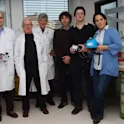
Life sciences
27 Oct 2016
Why do crabs slowly change color?
By Ian Salter, Frontiers Science Writer If someone called you a shore crab, would you know what they mean? So synonymous are chameleons for their ability to rapidly change color that we use the word figuratively to describe a person who changes their opinion or behavior according to the situation. Although people are unlikely to refer to you as a shore crab, they may just as well as they form a group of more obscure species that have the ability to adaptively change their appearance. However, unlike Chameleons and cuttlefish, they are unable to do so over a matter of seconds. Rather these changes occur over hours to days, or sometimes even weeks. The benefits of comparatively slow color change are perhaps less obvious than instant camouflage or communication signals, but no less intriguing. In a recent article published in Frontiers in Ecology and Evolution, Prof. Martin Stevens of the University of Exeter explores these concepts in more detail. “Our goal is to understand the mechanisms and function of camouflage and how it works in terms of defeating predator vision,” explains Stevens. In addition to camouflage, other possible reasons for color change may include thermoregulation, signaling and protection from UV […]













